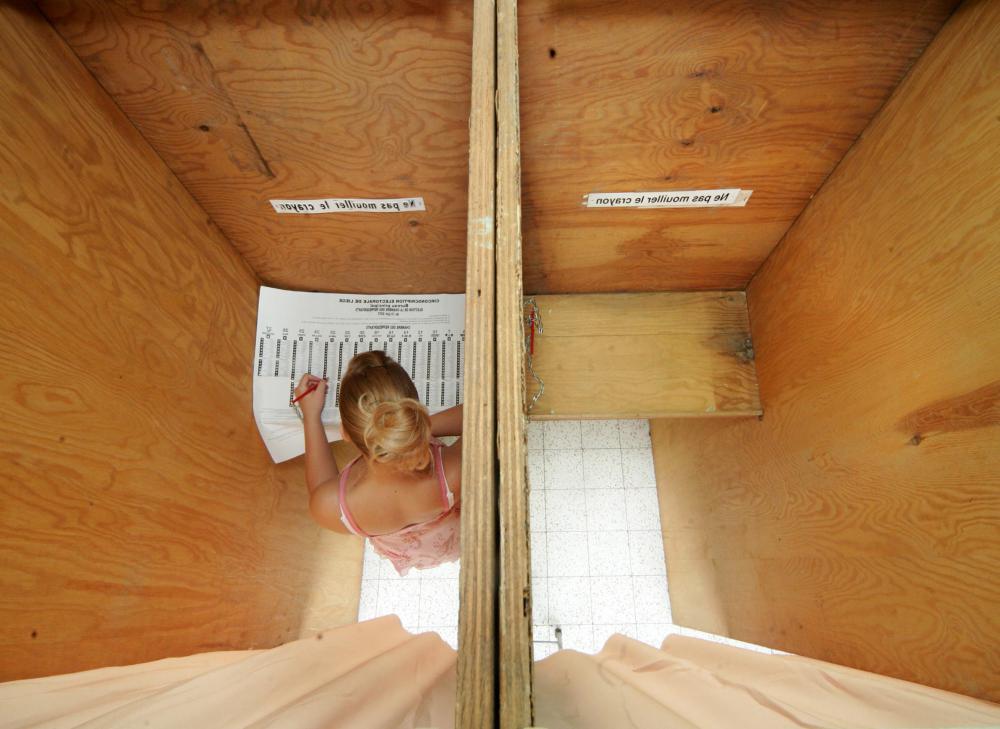At WiseGEEK, we're committed to delivering accurate, trustworthy information. Our expert-authored content is rigorously fact-checked and sourced from credible authorities. Discover how we uphold the highest standards in providing you with reliable knowledge.
How Secure is E-Voting?
Electronic voting or e-voting uses an electronic interface to collect and tabulate votes. Since the introduction of e-voting, debate has raged over the security of the technologies used, out of concern that some voters may be disenfranchised due to electronic errors. The security of e-voting ultimately depends on a number of factors, and verification is made difficult by manufacturers who want to maintain proprietary secrets like the software that they use.
In any election, election officials want to collect accurate results as rapidly as possible and tabulate them with minimal error. Inevitably, some amount of error will creep into any voting system, whether it's a sophisticated touchscreen machine or a basket which voters fill with rocks to support a candidate. The goal is to ensure that as many voters as possible are represented in final election counts. Since people expect election results as soon as possible, officials must also work quickly.

One of the major concerns about e-voting is that it is vulnerable to penetration by hackers. Numerous computer engineers have demonstrated these vulnerabilities by hacking into test machines to show how they can alter final vote counts or change the way in which the system records votes. In regions where e-voting machines are used, evidence suggests that votes have been deleted, duplicated, or misinterpreted by the voting machine.

Software and hardware errors are also an issue, as any computer owner knows. Many systems lack systems to cope with crashes or hardware damage, so it is possible for a voter to cast his or her vote and for that vote to be lost later because of a power failure or glitch in the software. Many voting rights advocates are also concerned about the lack of a paper trail with many e-voting systems. An entirely electronic system does not print a receipt or a hard copy of the votes cast, making it impossible to check for errors.
The type of e-voting system used also makes a big difference. An optical scanning machine, for example, scans paper ballots which voters fill out. The machine must interpret the darkened ovals to count votes, and the voter is usually not presented with a verification of the votes cast to ensure that the machine read the ballot correctly. Voter privacy is also compromised by such machines, as many poll workers routinely look at the ballots before scanning them to ensure that they are filled out correctly.
An entirely electronic system such as a touchscreen voting machine or Internet voting may be more secure in terms of voter privacy, but it also lacks a verifiable paper trail and it is very vulnerable to manipulation. This has been a big concern in regions which use different types of electronic voting machines in the same election, as some activists are concerned that elections could be skewed with faulty machinery. If, for example, machines with a 7% error rate are used in an area which favors candidate A and machines with a 2% error rate are used in an area which favors candidate B, the election will be skewed in favor of candidate B. Some people believe that this amounts to disenfranchisement, and they would like to see adoption of universal systems to prevent this.
AS FEATURED ON:
AS FEATURED ON:












Discuss this Article
Post your comments